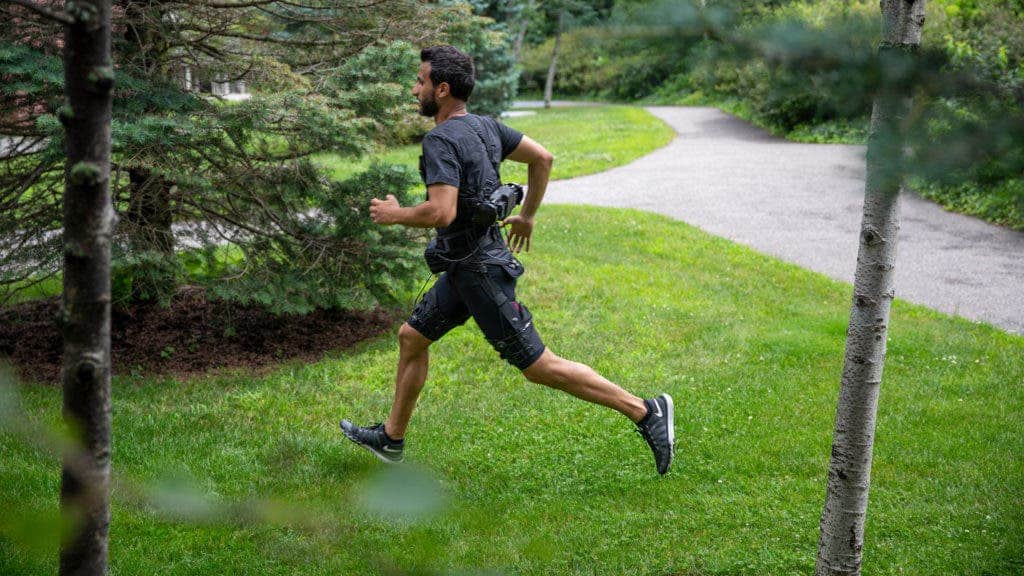An international team of researchers has recently described a pair of exoshorts that’s lightweight, portable, and mostly made of flexible materials that enhances both walking and running.
Exosuits allow people with disabilities to partially regain motor functions. Alternatively, they can be used to enhance our physical abilities. Previously, scientists demonstrated wearable robotic tech that enabled users to walk or run more efficiently, but not both — until now.
The wearable robotic unit was developed by engineers at Harvard’s Wyss Institute for Biologically Inspired Engineering, along with colleagues at the University of Nebraska Omaha and Chung-Ang University in South Korea.
A battery powers a motor unit that pulls cables that extend the hips, thereby reducing the amount of energy the body uses during movement.
An actuator attached to the user’s lower back is controlled by a machine-learning algorithm that allows the system to adjust to different gaits on the fly.
At first, the exoshorts feel awkward, but with a bit of training both walking and running performance is enhanced as measured by the amount of oxygen needed to breathe.
During tests, the researchers found a 9% reduction in energy consumption for walking and 4% for running. That’s equivalent to taking about 15 pounds (7 kilograms) off your waist.
The improvements are rather modest at this stage, but the goal was to show that this robotic assistive technology could do more than other exoskeletons. Earlier systems designed to enhance either walking or running are more efficient, but this one does both.
The system, recently described in the journal Science, is part of DARPA’s former Warrior Web program and took years to develop.
The researchers envision a future where these sorts of exoskeletons are used not only to help the disabled walk again but also to enhance performance in various environments. Systems that also offer back support, for instance, could be used by factory and warehouse workers to carry and maneuver heavier loads without expending more energy. Soldiers could carry more supplies and weapons. The range of possibilities is truly endless.










